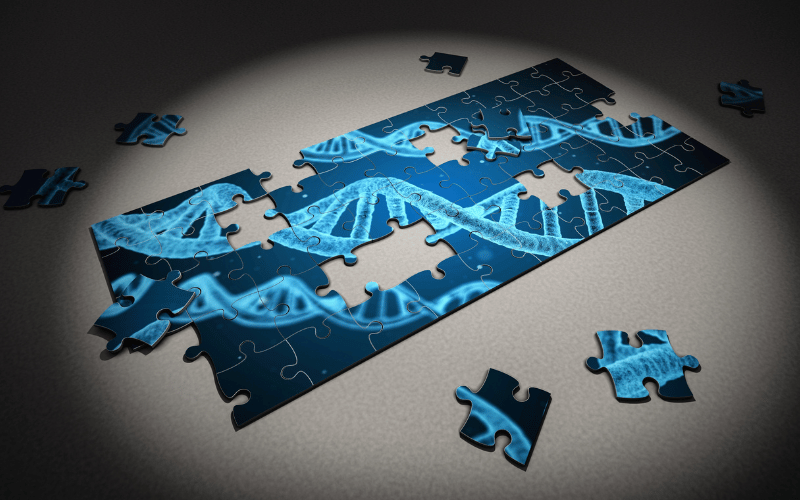2. The Genetic Link: How Genes Influence OKC Development

OKCs don’t just pop up out of the blue; there’s a genetic story behind them. The PTCH1 gene, a key player in cell growth, often goes rogue in these cases. Especially in Nevoid Basal Cell Carcinoma Syndrome, this gene’s mutation is the main suspect behind the formation of these cysts.
So, what’s the big deal about this PTCH1 gene? Well, it’s supposed to keep cell growth in check. But when it mutates, it’s like giving a green light to cells to multiply without control, leading to cysts. This is particularly significant in syndromic cases where multiple cysts are part of a larger syndrome.
This genetic angle isn’t just a fun fact; it has real implications. If you’ve got OKC running in the family, especially with the Nevoid Basal Cell Carcinoma Syndrome, it’s time for the whole clan to get checked. Early detection can make a world of difference, and knowing your genetic risk ups the ante for staying vigilant.
The genetics of OKC play a critical role in its tendency to recur. This isn’t just about managing what’s already there; it’s about staying one step ahead. Understanding the genetic factors can lead to more personalized, targeted treatments and, hopefully, less recurrence.
Lastly, these genetic insights are changing the game in how OKCs are treated and managed. Imagine treatments tailored to an individual’s genetic makeup, tackling the problem right at its root. This approach could minimize the risk of recurrence and pave the way for better patient outcomes. (2)